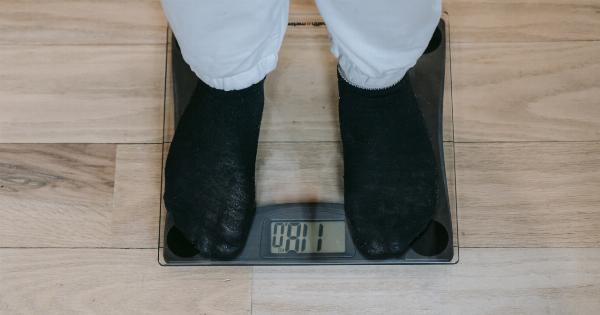Calculating your daily caloric needs is the first step towards achieving your health and fitness goals.
Whether you want to lose weight, maintain your current weight or increase your muscle mass, knowing how many calories your body needs each day is crucial for creating an effective meal plan.
What are Calories?
Calories are a measure of energy. They are the amount of energy required to raise the temperature of one gram of water by one degree Celsius. In nutrition, the term “calorie” refers to the energy content of food that the body can use.
The more calories a food has, the more energy it provides.
Factors that Affect Daily Caloric Needs
Several factors influence the number of calories your body needs each day:.
- Your basal metabolic rate (BMR)
- Your physical activity level
- Your age
- Your gender
- Your height and weight
Calculating Your Basal Metabolic Rate (BMR)
Your basal metabolic rate is the amount of energy your body needs to perform its basic functions, such as breathing and maintaining your heart rate.
The most accurate way to calculate your BMR is through a test called indirect calorimetry. This test measures the amount of oxygen your body uses and the amount of carbon dioxide it produces to calculate your energy expenditure.
However, there are also formulas that can estimate your BMR based on your age, gender, height, and weight. One popular method is the Harris-Benedict equation, which is as follows:.
- For men: BMR = 88.362 + (13.397 x weight in kg) + (4.799 x height in cm) – (5.677 x age in years)
- For women: BMR = 447.593 + (9.247 x weight in kg) + (3.098 x height in cm) – (4.330 x age in years)
You can use these equations to calculate your BMR, but keep in mind that they are only estimates. Your actual BMR may be higher or lower than the calculated value.
Calculating Your Total Daily Energy Expenditure (TDEE)
Your total daily energy expenditure (TDEE) is the total number of calories your body needs each day to maintain your current weight. It includes your BMR plus the calories you burn through physical activity, digestion, and other daily activities.
To calculate your TDEE, you can use the following formula:.
TDEE = BMR x Activity Factor.
The activity factor is a number that reflects your level of physical activity. The following table provides some examples of activity factors:.
| Activity Level | Description | Activity Factor |
|---|---|---|
| Sedentary | Little or no exercise, desk job | 1.2 |
| Lightly Active | Light exercise or sports 1-3 days a week | 1.375 |
| Moderately Active | Moderate exercise or sports 3-5 days a week | 1.55 |
| Very Active | Hard exercise or sports 6-7 days a week | 1.725 |
| Extra Active | Very hard exercise or sports, physical job or training twice a day | 1.9 |
Once you have determined your BMR and activity factor, you can use the formula above to calculate your TDEE.
Using Your TDEE to Achieve Your Goals
Once you know your TDEE, you can adjust your daily calorie intake to achieve your goals. To lose weight, you need to consume fewer calories than your TDEE. To maintain your weight, you need to consume the same number of calories as your TDEE.
And to gain weight, you need to consume more calories than your TDEE.
A safe rate of weight loss is about 1 to 2 pounds per week. To achieve this, you should aim to create a calorie deficit of 500 to 1,000 calories per day.
For example, if your TDEE is 2,500 calories, you should aim to consume between 1,500 and 2,000 calories per day to lose weight.
Conclusion
Calculating your daily caloric needs is an important step towards achieving your health and fitness goals. By determining your BMR and TDEE, you can create a personalized meal plan that will help you reach your desired weight or fitness level.




























